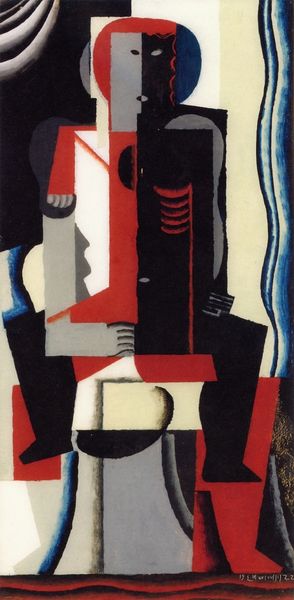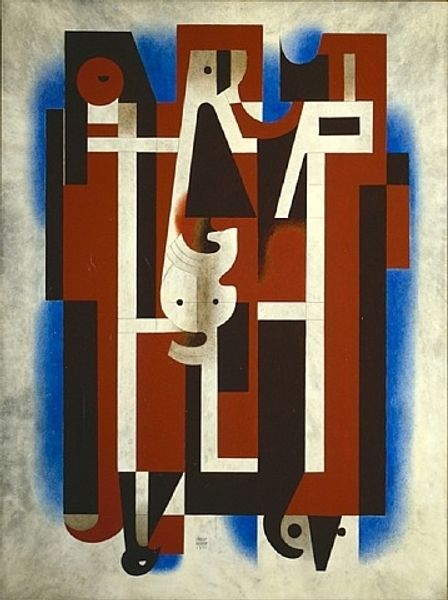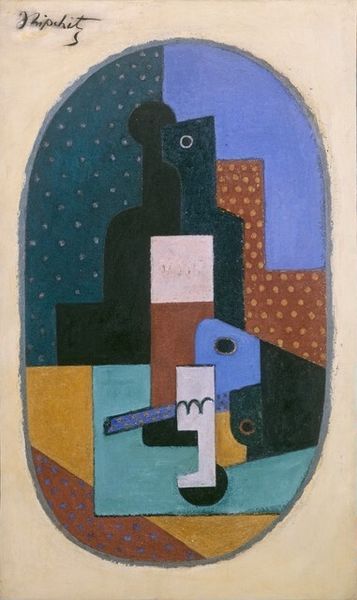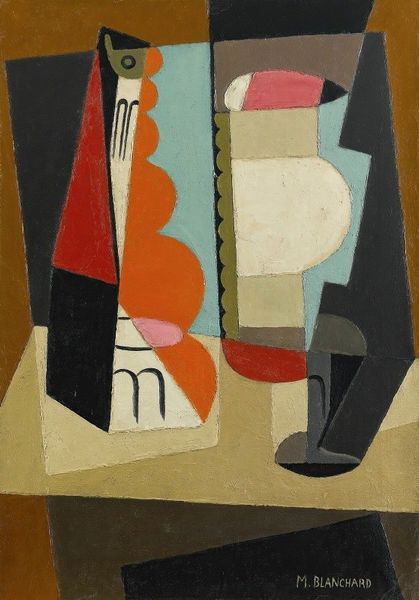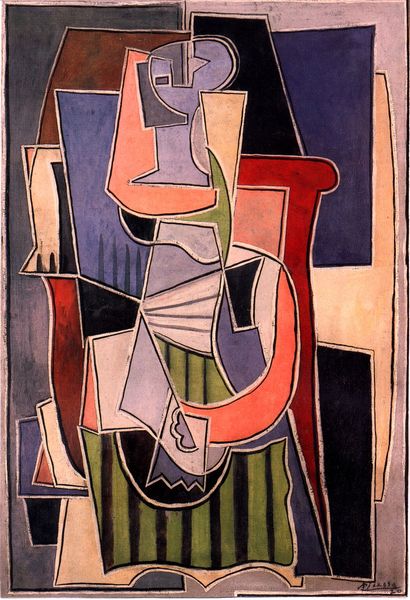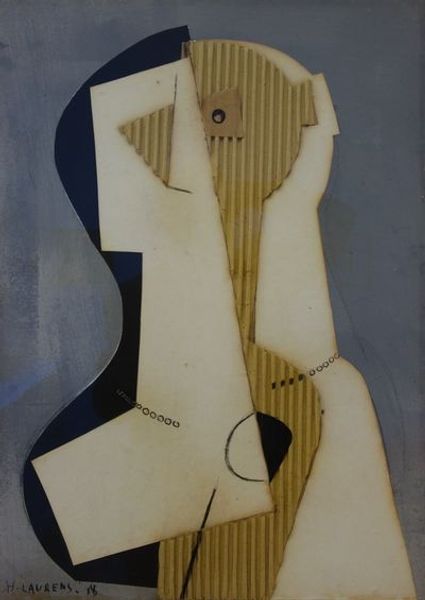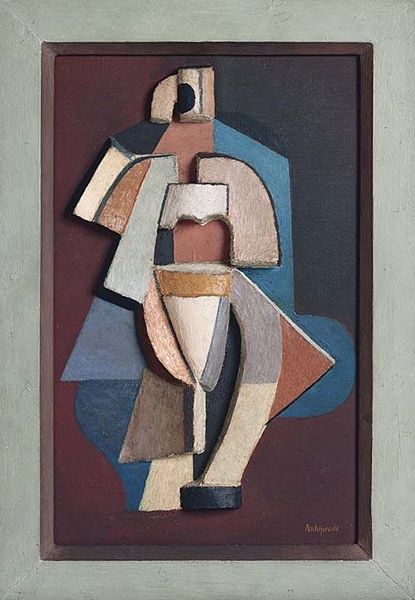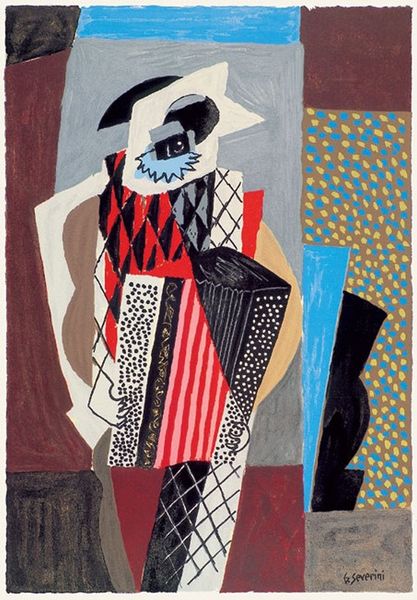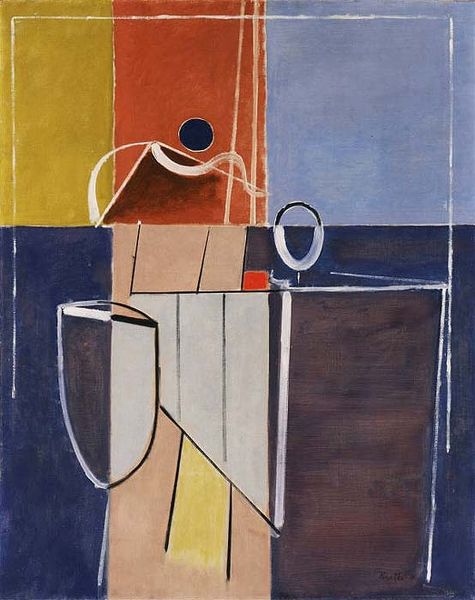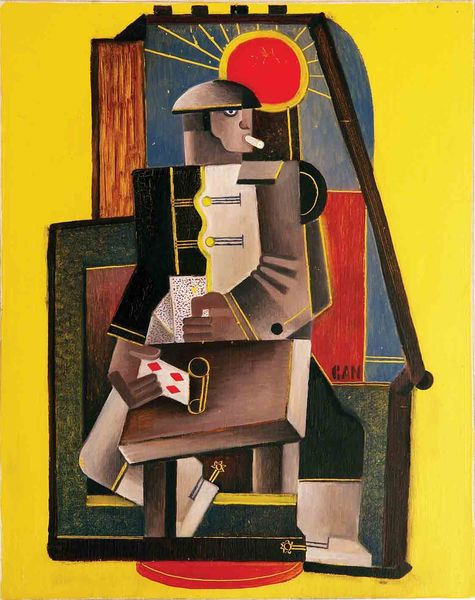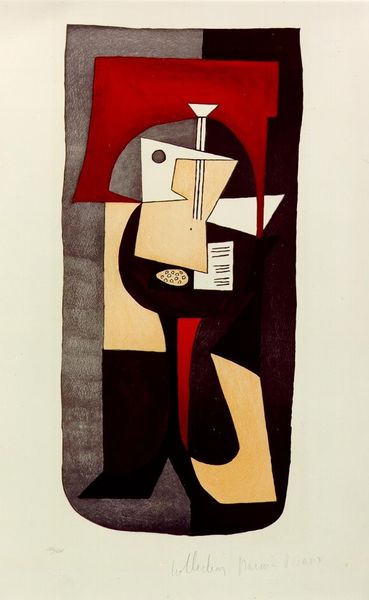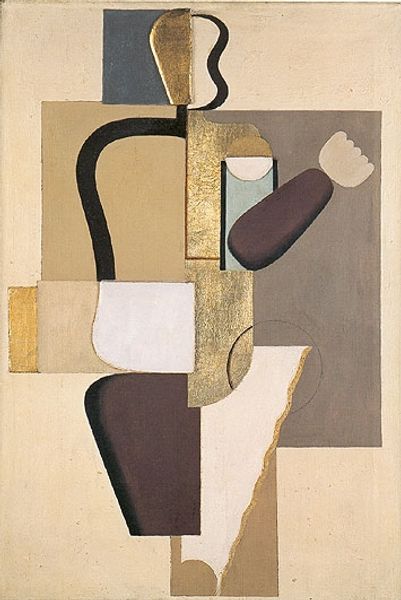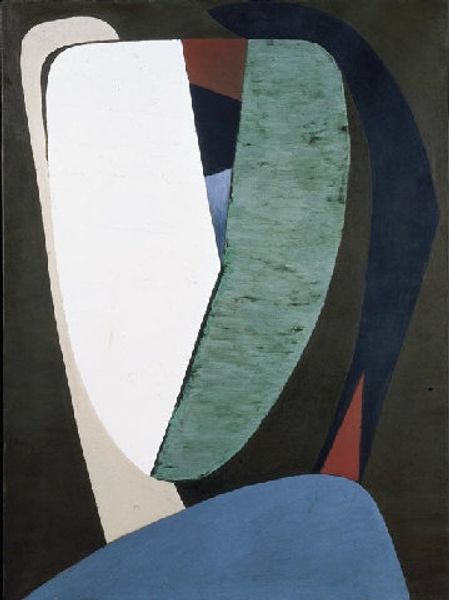
painting, oil-paint
#
portrait
#
art-deco
#
cubism
#
painting
#
oil-paint
#
figuration
#
geometric
#
modernism
Copyright: Gosta Adrian-Nilsson,Fair Use
Curator: Standing before us is Gösta Adrian-Nilsson’s 1928 painting, "Vertical Figure," an oil painting that embodies the artistic explorations of the early 20th century. Editor: Well, hello, geometry! My first impression is a playful sort of stoicism, like a city made of felt and buttons decided to put on airs. Is it just me, or does it feel very polite, somehow? Curator: It’s fascinating how you perceive that politeness! I see in the artwork a nexus of influences – the clean lines of Art Deco, a cubist approach to form, all channeling a modern sensibility toward figuration. Can you sense that blend in this...constructed personage? Editor: Absolutely. There’s a structured rigidity, right? A tension between geometric form and the suggestion of something alive. I am picking up on its subtle interplay of shapes, suggesting the artist trying to build a person. I suppose I mean they don't quite seem finished. What’s the underlying story that brought those symbolic ingredients together for Adrian-Nilsson? Curator: Nilsson was deeply immersed in exploring the intersections of modernity, identity, and the machine age. There's the abstracted human form as a sign of cultural transition. Each color, each sharply defined shape, represents ideas rather than mimetic representation. The palette itself hints at this…muted, almost contemplative. Editor: Muted indeed! Except for those slashes of red…and that fantastic turquoise flourish near the base. I suppose it's that splash of flamboyance that hints at a heart beating, however abstract. But I must know what's with the random “GAN” text on the right side there…was this one of the earliest forms of "tagging"? Curator: GAN were the artist's initials. These functioned as a declaration – as though this abstracted form becomes a portrait by signing its very shape into being. Also, I want to say that it is very common among paintings from that era. It becomes, like, an intimate joke within the formal structure of the work. A quiet act of self-assertion. Editor: Hmm, I like that. And knowing it’s there makes the stoicism crumble a bit. Suddenly, it feels more personal, like a quirky relative posing for a very strange family photo. I will definitely keep this image of Nilsson, playing, constructing, while I imagine and wonder what this might imply. Curator: Precisely! It's a piece that speaks volumes without saying much, leaving it up to the viewer to participate in its strange, modernist story.
Comments
No comments
Be the first to comment and join the conversation on the ultimate creative platform.
